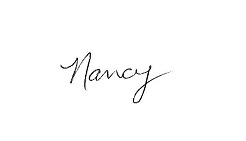Did you miss any of the Nancy’s Notes and Quilting Tips we have been posting on our Facebook page recently? If you did, don’t worry, we gathered them all together here for you.
Nancy’s Notes and Quilting Tips Round Up
Five Stash user-uppers:
1) Cut width-of-fabric into 2 1/2″ jelly roll strips. Use them for a scrappy jelly roll pattern.
2) Make bookmarks by fusing two layers together and cutting edges with pinking or wavy cutter. Punch a hole at the top and add a ribbon.
3) Use pretty fabric strips to tie small trees and plants to their stakes.
4) Make yourself some new pillow cases!
5) Use scraps and Mod Podge to cover worn out trays, vases, etc.
Guild gift exchange on the calendar? Five gift ideas…
1) Cover and decorate a notebook with buttons, trims, etc.
2) Make her a pincushion.
3) Make her a guild or retreat name tag.
4) Make some quilt labels.
5) Cut a stack of charm squares (5″) from your scraps.
Five ways to recycle your old cutting mats:
1) Cut into smaller pieces and use the backs for foundation paper piecing projects.
2) Cut large mats into smaller ones to carry to classes, cutting off the worst parts.
3) Glue fine grit sand paper face up to the top of mat. Use to hold fabric pieces in place while you are marking them or writing on them with markers.
4) Cut into template shapes you can cut or trace around. Use permanent marker to label them.
5) Give pieces to your kids/grandkids/hubby for craft work surface to protect table top.
You finished a quilt and discovered that it doesn’t lay flat. Four reasons your quilt top does not lay flat:
 1) The fabric was not cut to the exact correct size.
2) The fabric was not cut on grain.
3) The fabric was stretched while sewing.
4) The seams were not pressed all the way out on the top of the blocks.
- So what if you goofed up! Use those failed machine embroidery projects anyway. They make great scraps for crazy quilting.
- If you are sewing large triangles, stay-stitch the bias edge before sewing the triangle to another piece. This prevents stretching. Stay-stitching is simply stitching along close to the edge (in the seam allowance so about 1/8″ from the edge) with a medium length straight stitch.)
- Save money on rotary blades. Save old rotary cutter blades in a container labeled “used” or “crafts” to use on paper and other craft items that may dull your good expensive blades. If you have an extra cutter, you can keep a crafts blade in it and label the handle “craft
- Quilting gloves make it easy to grip and insert or remove basting safety pins without getting sore fingers.
- Easy sewing machine needle organizers can be made by taking velcro and sticking the two sides together. Slide the needles between the layers. Label each with marker as to size and type. Keep them all in a ziplock baggie.
- When prewashing large pieces of fabric, safety pin the selvage ends together to prevent knotting and twisting during washing and drying.
- Do you hate to throw away the pretty and thoughtful notecards you receive from friends? Use them for bookmarks in your quilting & craft books and you will get a trip down memory lane the day you finally get to that project.
- Do you make quilts for kids? When making a quilt for a child who can read, add a pocket on the back where you can enclose a special note written on fabric so it is washable.
- An emery board makes a great non-slip straight edge when drawing lines on the back of your half square triangles, for example.
- Purchased light boxes can be crazy- expensive but essential for transferring patterns. Try this: Put an inexpensive folding or clip-on light under your sewing machine extension table. It works!
Check us out on Facebook for more Nancy’s Notes and Quilting Tips.







